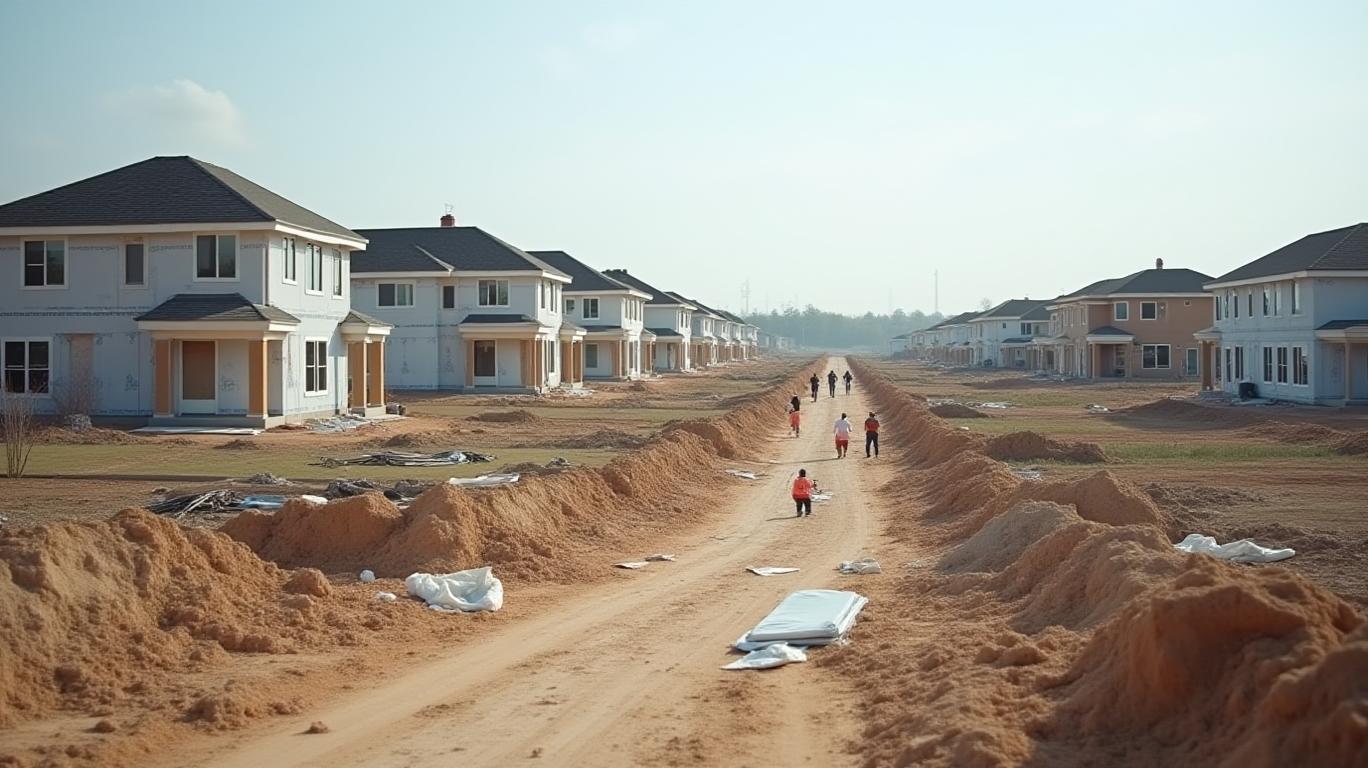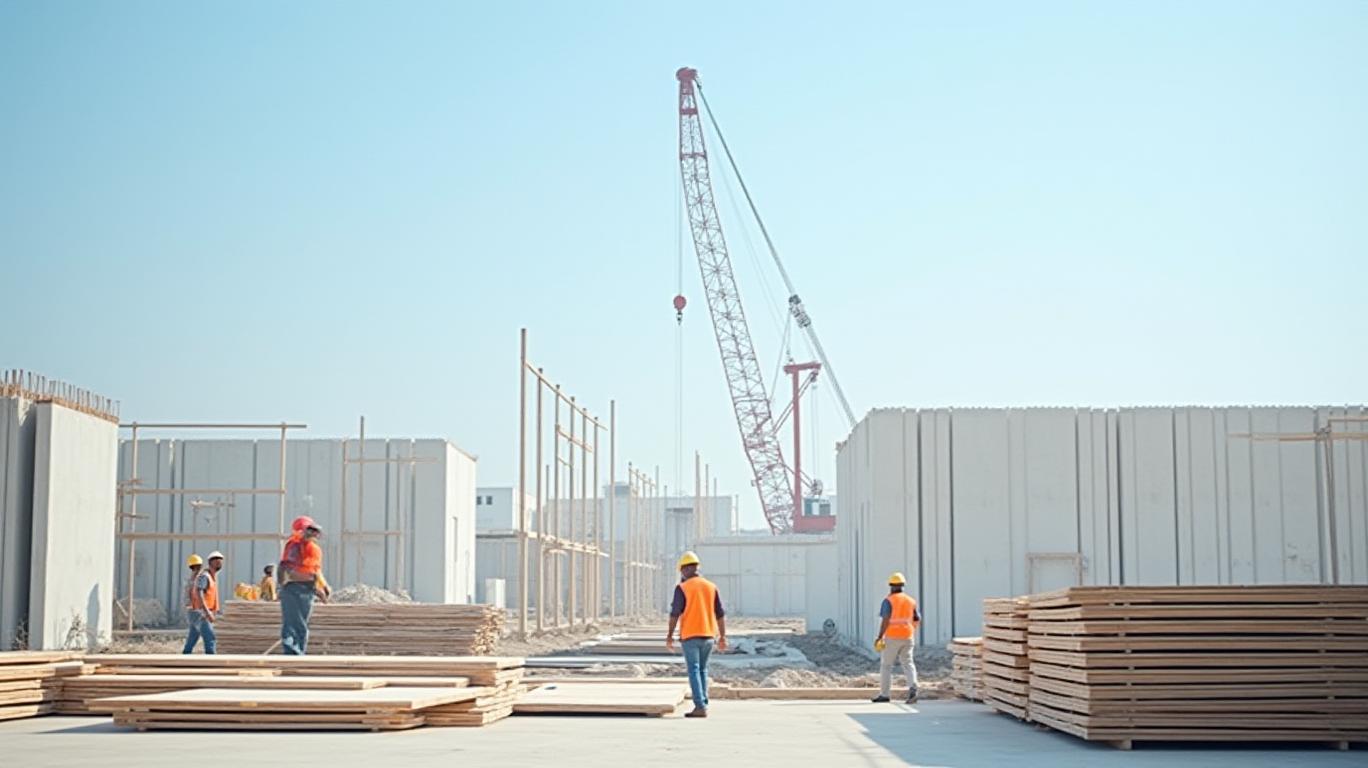Builders FirstSource Faces Stiff Headwinds as Stifel Downgrades Outlook Amid Housing Market Concerns
Builders FirstSource (BLDR) shares dropped sharply following Stifel’s February 20, 2025 downgrade to Hold from Buy, underscoring mounting investor anxiety over the residential construction sector. The brokerage’s revised price target of $125—a $31 cut from its prior $156—reflects growing skepticism about the company’s ability to navigate a prolonged housing slump. This move contrasts with the broader analyst consensus, which still averages a $163.70 target, but highlights escalating risks in an industry facing affordability challenges, policy uncertainty, and structural shifts.
The Downgrade Catalysts: A Perfect Storm
Stifel’s decision hinges on three key factors:
1. Residential Construction Downturn: Single-family homebuilding volumes have declined sharply, with multifamily sales dropping 29% in Q4 2024. This trend, paired with affordability pressures—driven by high mortgage rates and stagnant wage growth—has eroded demand for Builders FirstSource’s building materials and services.
2. Policy Uncertainty: President Trump’s proposed “Liberation Day” policies, aimed at easing zoning restrictions to boost housing supply, have introduced regulatory volatility. While the policy’s long-term benefits could be positive, near-term implementation risks and market confusion have clouded visibility.
3. Operational Headwinds: Q4 2024 results revealed an 8% sales decline to $3.8 billion, a 32.3% gross margin (down 300 basis points year-over-year), and a 28% drop in adjusted EBITDA to $494 million. Stifel also cited extreme weather events, including California wildfires expected to cost $80 million in Q1 2025, as compounding risks.

Data Shows the Market’s Growing Caution
The stock’s post-downgrade reaction underscores investor sentiment. While Builders FirstSource’s net debt/adjusted EBITDA ratio of 1.5x and no near-term debt maturities (until 2030) provide stability, the market is pricing in prolonged pain.
Analysts are split, but Stifel’s bearish stance is notable for its specificity. The brokerage argues that even if housing demand stabilizes, margin pressures from competition and input costs will persist. Its $125 target now matches the lowest estimate among 20 analysts, signaling a widening divide between optimists and pessimists.
Can Builders FirstSource Navigate the Uncertainty?
The company’s 2025 guidance offers mixed signals. Projected $16.5–17.5 billion in net sales and $1.9–2.3 billion in adjusted EBITDA suggest management believes in a gradual recovery. Free cash flow expectations of $600–1 billion further highlight its liquidity strength. However, Stifel contends that these targets may be overly optimistic if housing starts remain depressed and policy changes disrupt operations.
The broader housing market’s trajectory remains critical. If single-family permits bottom out and multifamily demand stabilizes, Builders FirstSource’s scale and geographic diversification could prove advantageous. Yet, with mortgage rates near 7% and home prices still above pre-pandemic levels, affordability remains a ceiling.
Conclusion: A Company at a Crossroads
Stifel’s downgrade crystallizes a pivotal moment for Builders FirstSource. While its balance sheet and long-term contracts provide a buffer, the housing market’s prolonged slump—and the risks of further margin compression—suggest near-term volatility. The stock’s drop to $125 aligns with Stifel’s pessimism but also leaves room for upside if the company can outperform its conservative guidance.
Investors must weigh two realities: Builders FirstSource’s operational resilience versus the industry’s macroeconomic headwinds. With consensus estimates still elevated, the stock’s performance hinges on whether the housing market’s “soft landing” materializes—or if Stifel’s caution proves prophetic in a deeper downturn.
In short, the downgrade isn’t just about one brokerage’s call. It’s a referendum on whether the U.S. housing market can rebound before Builders FirstSource’s margins—and investors’ patience—hit rock bottom.





















